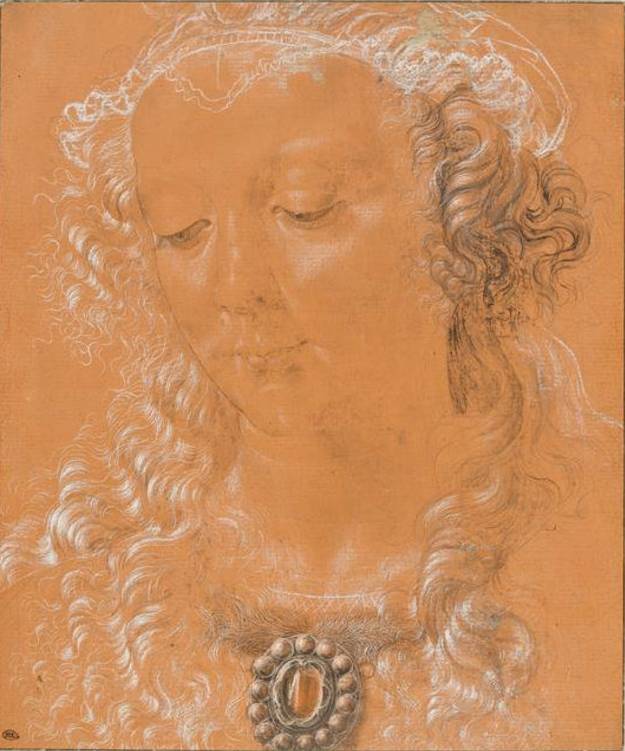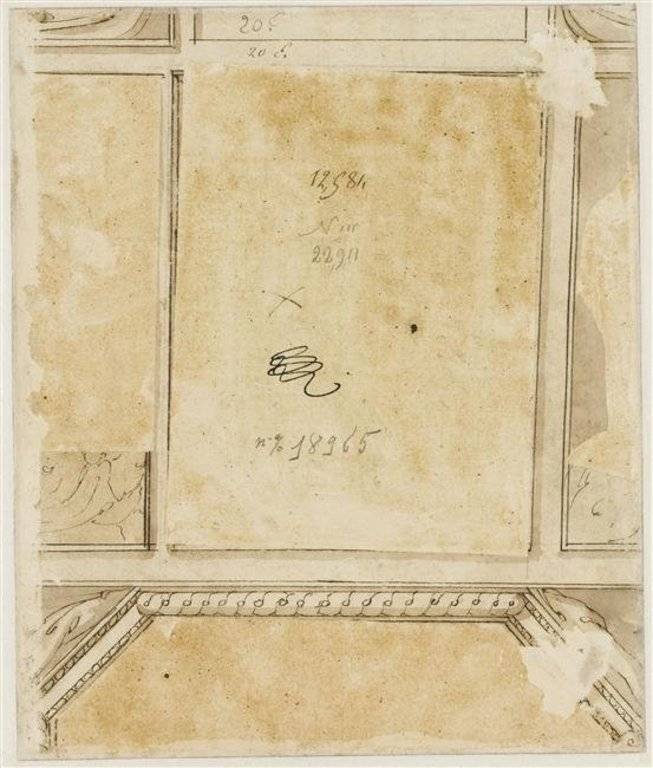Verrocchio, Andrea del (1435-1488)
Testa di donna (Head of a woman, eyes lowered, slightly turned to the left)
s.d.
Metalpoint, pen and brush in black and gray ink heightened with white, on orange-red prepared paper, 26.7 x 22.4 cm
Musée du Louvre, Paris
Attributed to Verrocchio by A. E. Popp (in Old Master Drawings, 1927, II, 7 (dec.), p. 35), who identified him with one of the heads made by the artist described by G. Vasari (‘Le Vite…’, Florence, 1906, III, p. 364). Attributed to Leonardo by W. Suida (Leonardo und sein Kreis, Munich, 1929, p. 20), who compared it to the Madonna with the Carnation (Munich, Alte Pinakothek). From Verrocchio‘s workshop according to L. Goldscheider (Leonardo da Vinci, London, 1959, under n° 63), G. Passavant (Verrocchio: Sculptures, Paintings and Drawings, Edinburgh, 1969, p. 210 n° 39: Credi?), who compared it to the Madonna and Child with two angels in London (National Gallery), and D. A. Brown (Leonardo da Vinci. Origins of a Genius, New Haven, London, 1998, pp. 127-128, 208 note 34: Perugino in Verrocchio‘s workshop?). To compare with different works by Verrocchio: the Madonna and Child in Berlin (Staatliche Museum), the bas-relief with a similar composition in Florence (Bargello), two studies of heads in London (British Museum, 1895-9 -15-785) and in Oxford (Christ Church, inv. 0005) – A. E. Popp, op. cit. A similar brooch model can be found in a study by Verrocchio for a Madonna and Child in the Dresden Museum (Kupferstichkabinett). For a complete notice and bibliography, see F. Viatte in cat. exp. Leonardo da Vinci, drawings and manuscripts, Paris, Musée du Louvre, 2003, n° 1. See also: G. Dalli Regoli, Verrocchio, Lorenzo di Credi, Francesco di Simone Ferrucci, Milan, 2003, p. 9-10: between Verrocchio and Leonardo, but rather Leonardo; cf. cat. No. 1 (Verrocchio or Leonardo?). Cat. of exp. Ghirlandaio y el renacimiento en Florencia, Madrid, Museo Thyssen-Bornemisza, 2010, n° 11. (Louvre)

